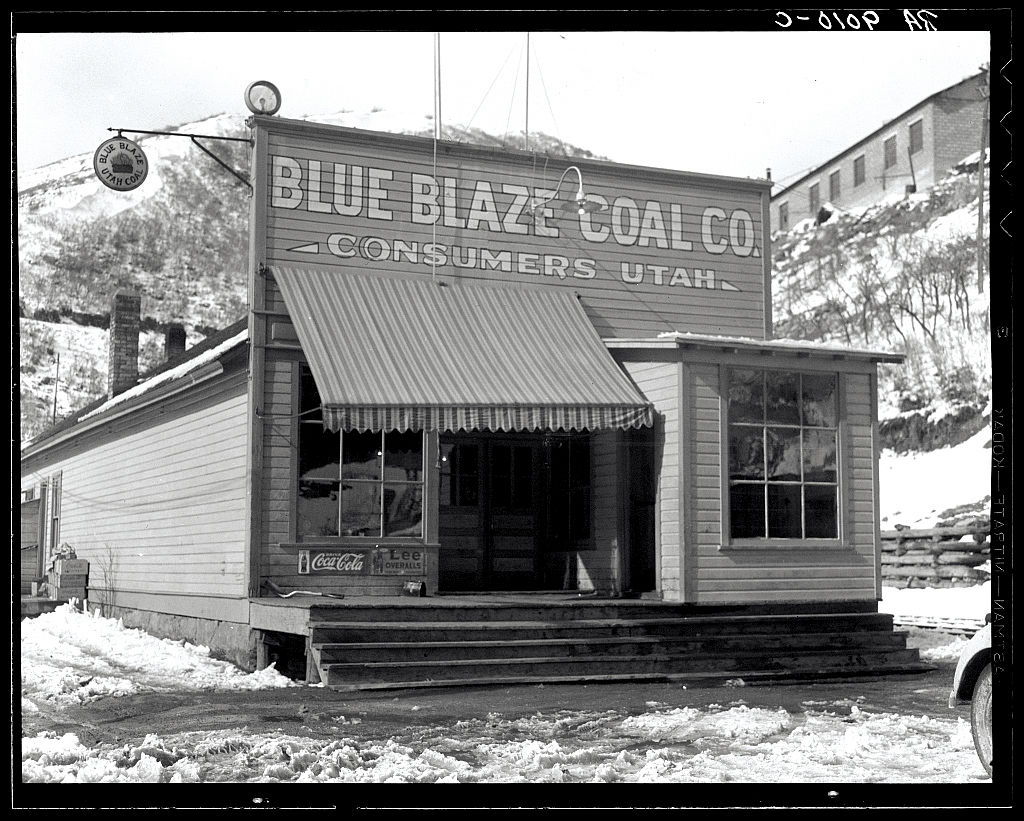“Life in a Utah Coal Camp: Dorothea Lange’s photographs of Consumers Mining Camp, 1936” offers the community a rare opportunity to experience its own, local history and heritage, memorialized through the lens of the woman widely considered America’s greatest documentary photographer.
The exhibit opened Sept. 3. It runs through Sept. 28 at Gallery East on the Utah State University Eastern Campus in the Central Instruction Building.
There will be an opening reception at Gallery East on Sept. 7 from 6 p.m. until 8 p.m. All 36 of Lange’s photographs from the Mining Camp will be on exhibit as well Lange’s field notes from the mining camp.
Dorothea Lange is best known for her work during the Great Depression for the Farm Security Administration. Her photographs served to encapsulate the plight of millions of Americans during the darkest economic downturn in the Nation’s history. Her photograph “Migrant Mother” is still the most iconic image of that era, and one of the most famous and recognizable of the 20th Century.
Noel Carmack, Gallery East curator, said the images will certainly connect with the community as this is a piece of personal history for many in the area.
“I knew Lange had been in Utah, but when I realized that she had taken pictures in Consumers, I knew this would be an important exhibit for the community,” he said. “There are certainly relatives of those who lived in the mining camp still here in the area, and there may be some who would recognize these images from their childhood.”
Because Lange was working for the FSA and charged with the mission to document economic conditions and act, essentially, as an investigative reporter recording the struggles of Americans, her photographs are the property of the people. Carmack requested the images form the Library of Congress, who keeps them in a repository.
“I think people will be impressed and affected by these images. They are exquisite – beautifully done,” Carmack said. “Every image is a work of art.”
This is the first time all the images from Lange’s visit to Consumer’s Mining Camp will be displayed together in exhibit, Carmack said.
Adjunct Photography Professor at USUE and Fine Arts Photographer Jason Huntzinger who is also the director of the Western Mining and Railroad Museum in Helper, assisted in downloading the images, editing them, and properly printing them on museum-quality paper so they can be preserved as part of the permanent collection at USUE.
“I was consistently amazed that every single image was compositionally extravagant, and perfectly executed,” Huntzinger said. “I am excited for people to see this exhibit. I know that it will resonate with the community – both because of the cultural and personal significance elicited by the photographs, but also because each and every image is a carefully crafted work of art.”
Huntzinger added that Lange’s photographs tell a complete story, both as separate images and as a complete collection.
“It is clear that Dorothea was very perceptive, and had a gift for developing a rapport with her subjects, allowing her to build a full narrative with the images, and providing context for the people in the photographs. She perfectly employs the use of line and composition to incorporate the background and give a sense of place,” he said. “You hear the story of how the people lived in just one frame.”
Huntzinger has extensive experience working in dark rooms, and digitally edited the images with that process in mind to ensure the prints were presented in a manner consistent with Lange’s work.
He is planning on using Lange’s photographs in the Mining and Railroad Museum in a smaller, permanent exhibit.
“These images encapsulate a time and place that is central to what we are doing as a museum” Huntzinger said. “I think she was very perceptive and sensitive to the lives that people live. Her work as a true artist brings our history and culture to life in a tangible and expressive form.”
Gallery East is located in the Central Instruction Building, and is free and open to the public during the academic year, Monday – Friday 9:00 a.m. – 5:00p.m.
Photo exhibit showcases 1930s-era Consumers coal mining camp

Blue Blaze Store
